Are You Wearing the Right Bra Size?

With inconsistent and no size standards, many women might not wear a perfectly sized bra. But worry not – we're here to guide you. Here are some signs that indicate you might not be wearing the right bra size:
-
Wrinkling in the cups
-
Underwire poking the sides of your breasts
-
A band that rides up
-
Cup spillage
-
Slipping straps
-
A bra that rises up when you lift your arms
If you have any of these fit difficulties, visit a professional bra fitter or measure your bra size at home using a measuring tape. It's crucial to note that changes in weight, new exercise routines, pregnancy, and nutritional changes can all cause changes in bra size.
Step 1: Determine Your Bra Band Size
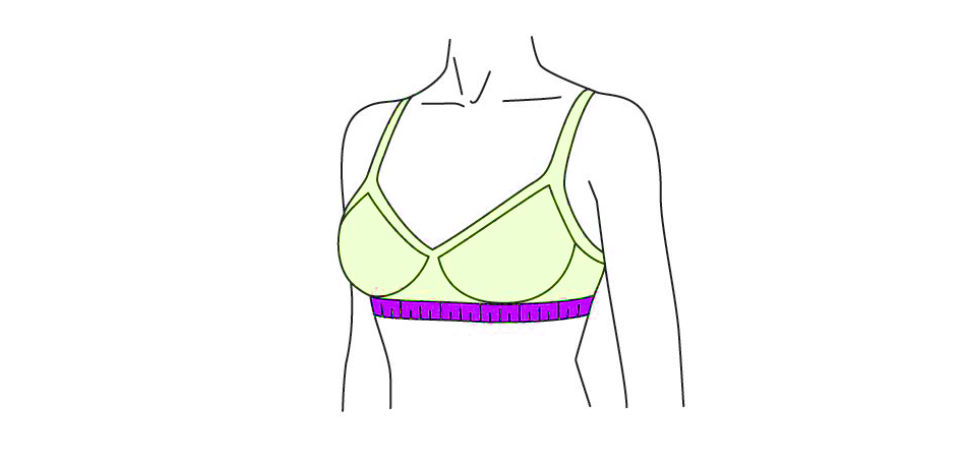
To accurately determine your band size when not wearing a padded bra, use a measuring tape to measure directly below your bust, where a band would normally sit. Check that the tape is level and sung. The measurement should be rounded to the nearest whole number.
Add four inches if the rounded value is even. Add five inches to odd numbers. The total of this calculation will be your band size. For example, if you are 32 inches tall, your band size is 36. If you are 33 inches tall, your band size is 38.
Step 2: Take Your Bust Measurement
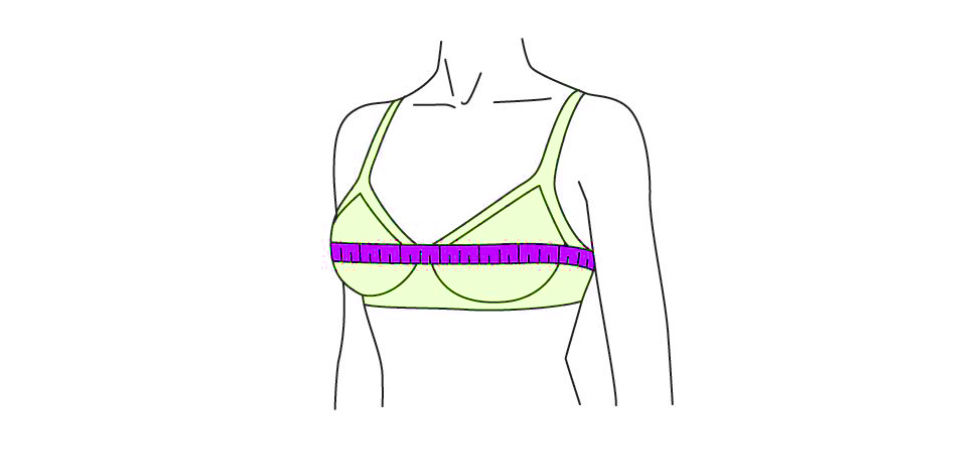
Gently wrap the measuring tape around the fullest area of your chest (at nipple level), allowing for a slight looseness. Round the measurement to the nearest whole number, ensuring accuracy and precision.
Step 3: Calculate Your Cup Size
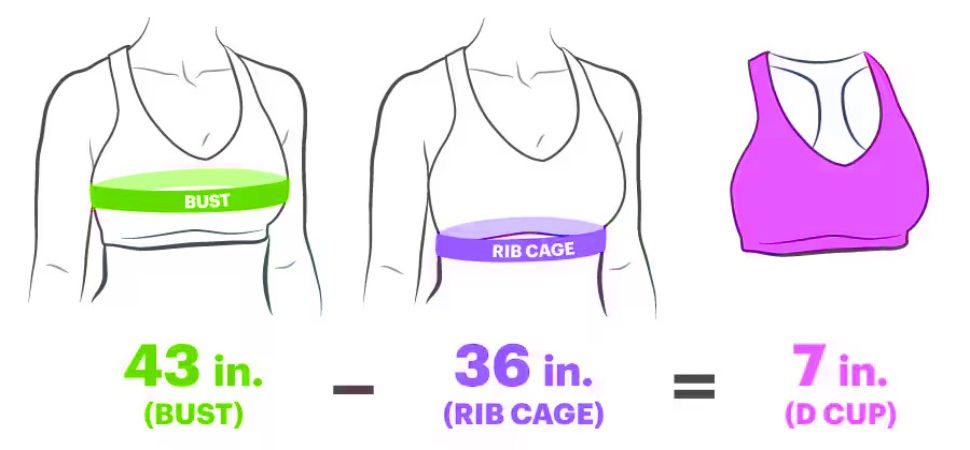
To determine your bra size, follow these steps:
-
Calculate your band size by subtracting your bust measurement from your band measurement.
-
Consult the bra cup size chart provided.
-
Combine your band size with your cup size to determine your bra size.
For Example:
Suppose the bust measurement is 37 inches while the band measurement is 34 inches. By subtracting the band measurement from the bust measurement (37 - 34), the difference is 3 inches. Therefore, the bra size is 34C.
Why Do My Bra Straps Keep Falling Down?
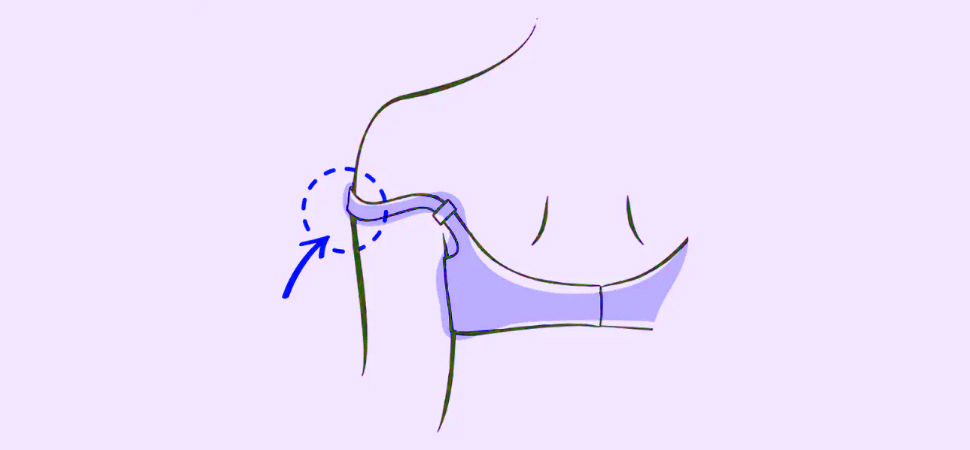
According to Fantegrossi, it's vital to have the perfect fit for your bra straps. They should be snug enough to allow one finger to go underneath but not too loose to lift up. Adjust them every three to four times you wear your bra, always after washing. If you are continuously lifting your bust by adjusting the straps, it may be time to rethink your band size.
If your bands frequently drop off your shoulders, this could be due to sloping shoulders. In that instance, a racer-back style may be an excellent option. Remember that getting refitted every six months is a good rule of thumb to ensure a great fit.
Using a Bra Sizing Chart, Measure and Adjust Sizes
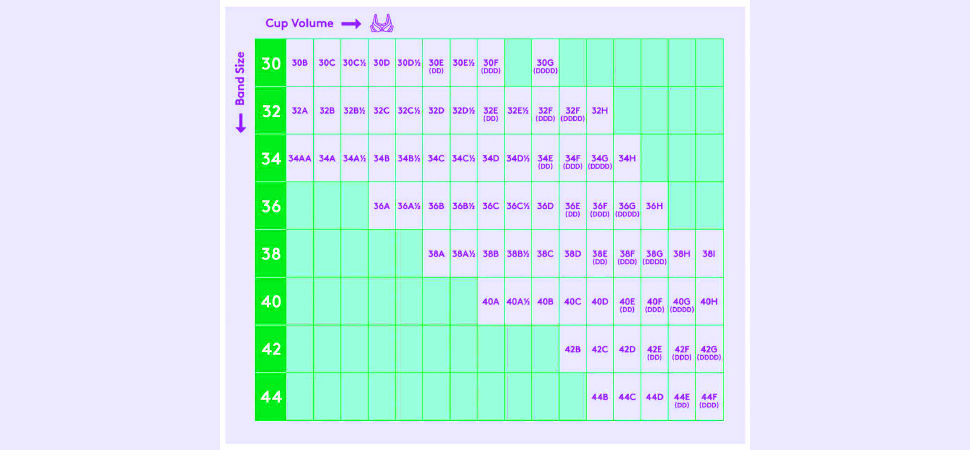
If you need to adjust the cup size for a better fit, consider going up or down a band size accordingly. For instance, if a 34C feels too roomy in the cups, try a 36B instead.
Refer to the provided bra size chart to ensure proper sizing, keeping in mind that your bra size may vary slightly depending on the brand or style. Finding the ideal fit may require some trial and error, but don't fret, you'll get there!
Conclusion
Remember that it is also important to consider how your bras feel when they are on your body, not just what size they are. A properly fitted bra should never pinch, dig in, or be too loose. It should feel like an extension of your body and provide comfortable support all day.
So don't just stick to the size that you measure; make sure to try on a few different styles until you find one that fits comfortably as well as looks stylish. With the right fit, you can feel confident and beautiful both inside and out.
Go forth and find the bra size that works best for you - it's easier than it looks! With a few precise measurements and some trial and error, you'll soon discover the perfect fit. Good luck!


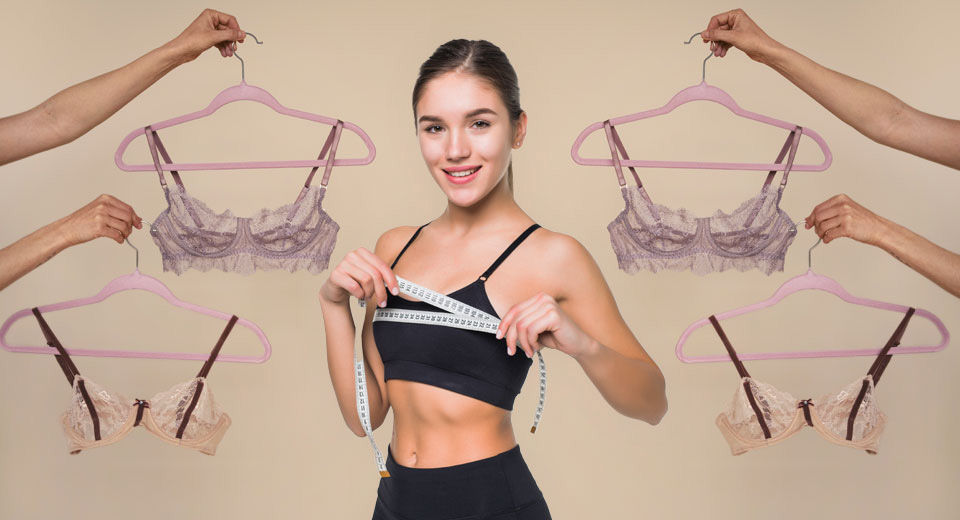







.jpg?updatedAt=1735200955338)